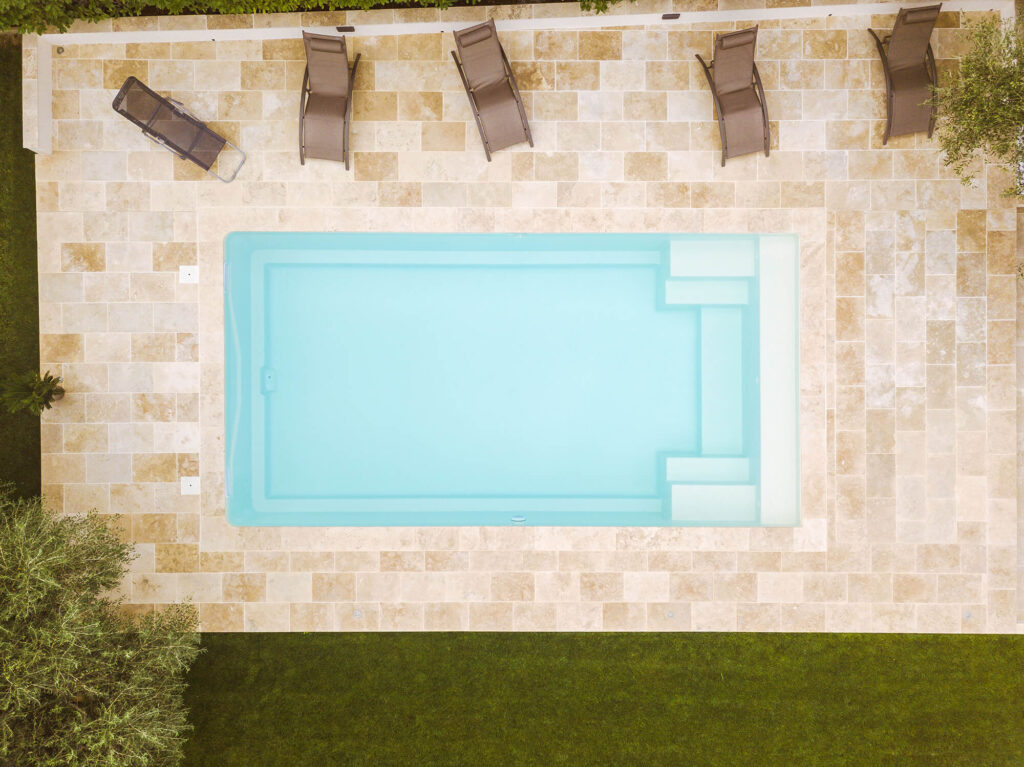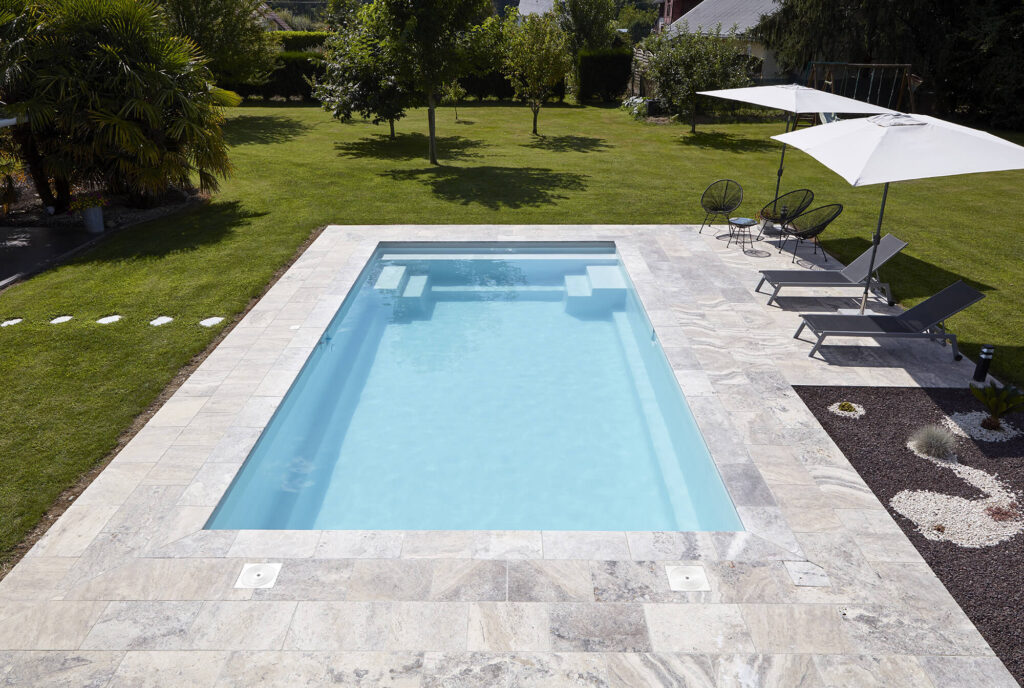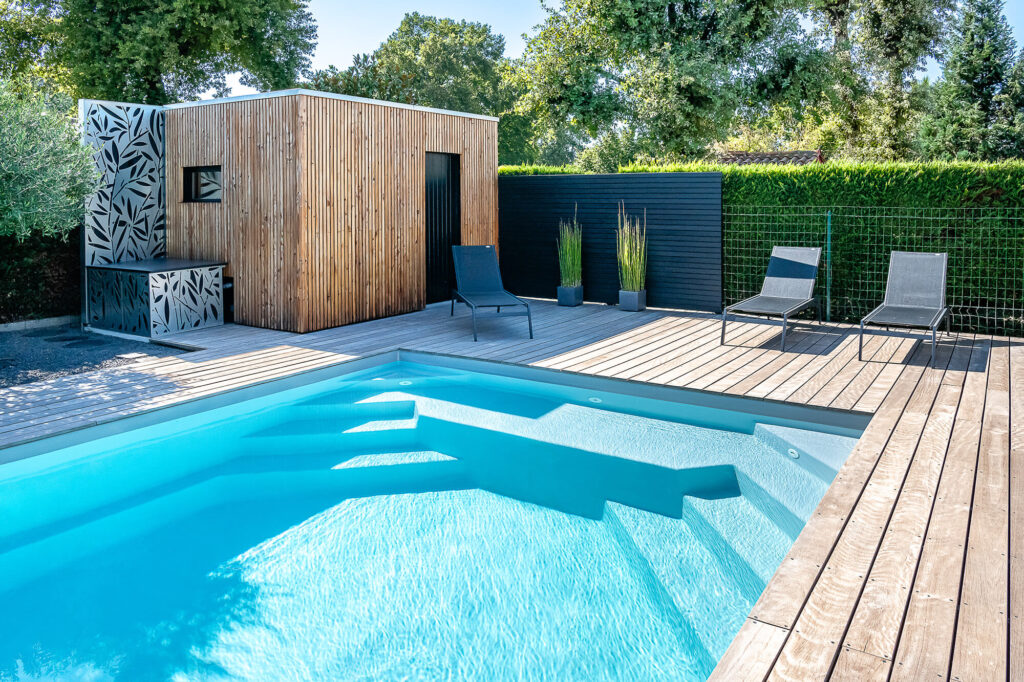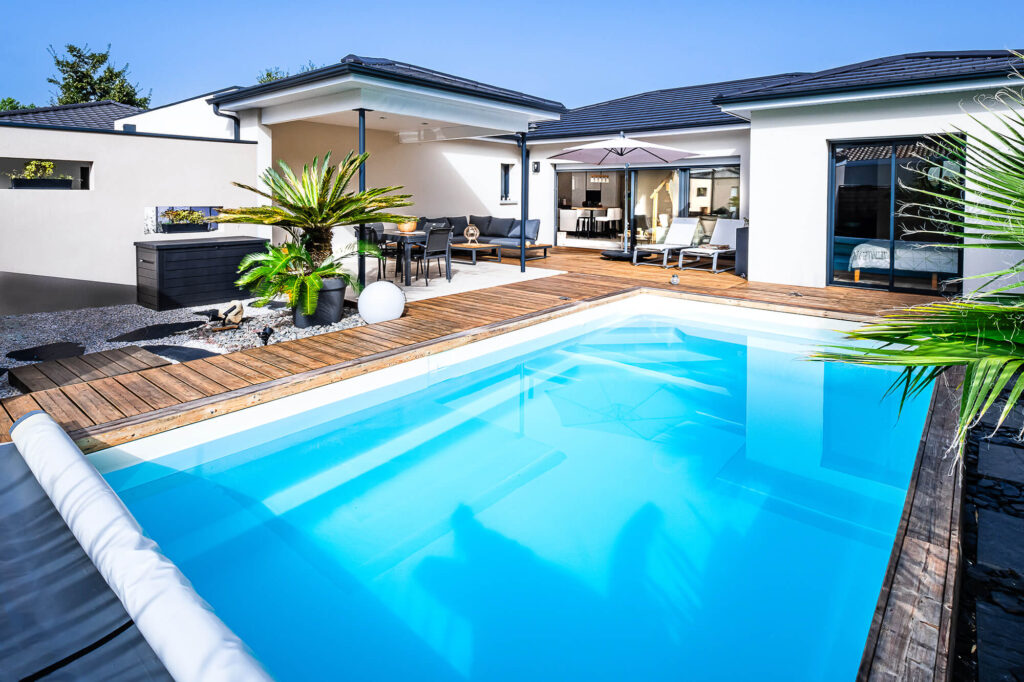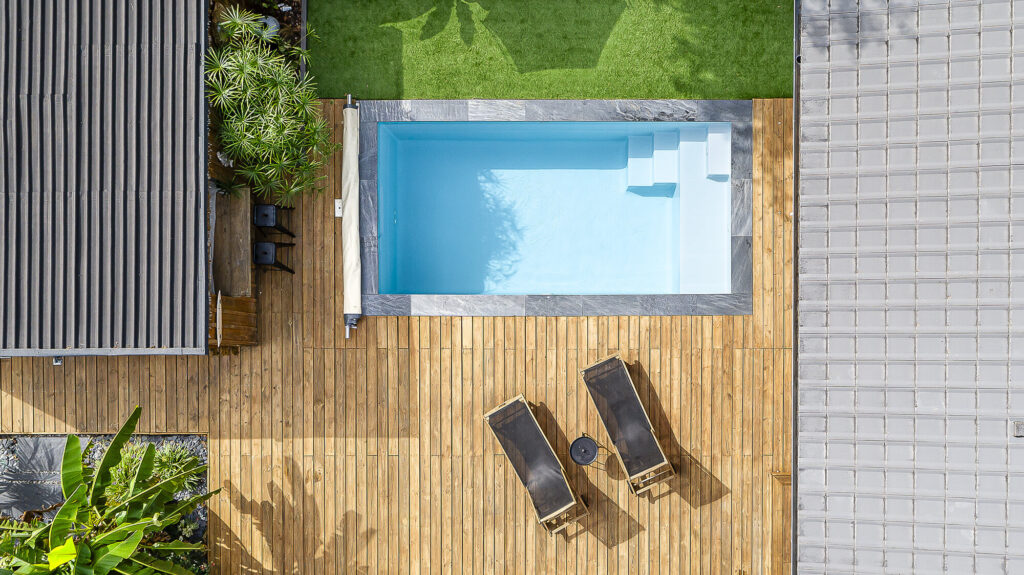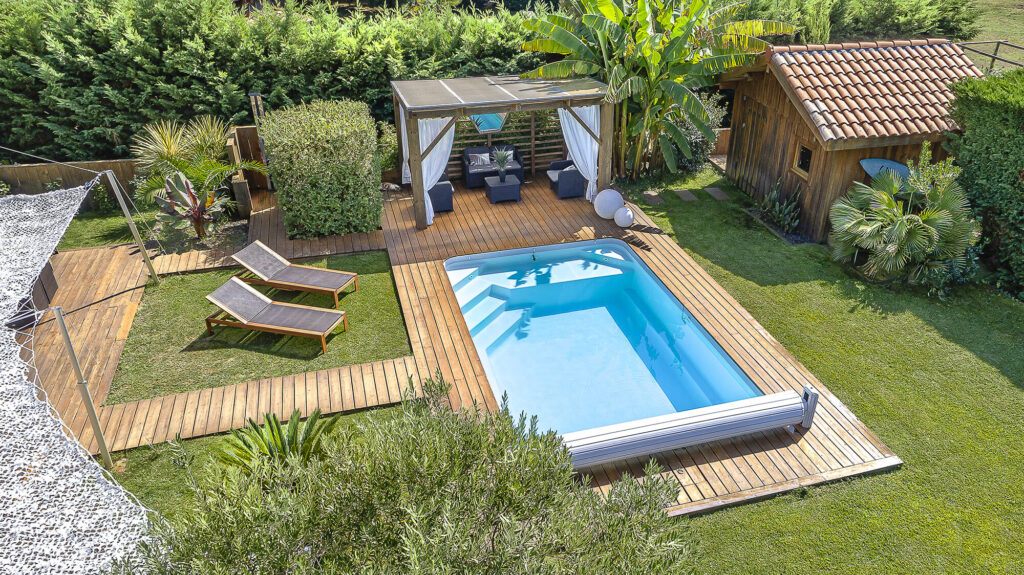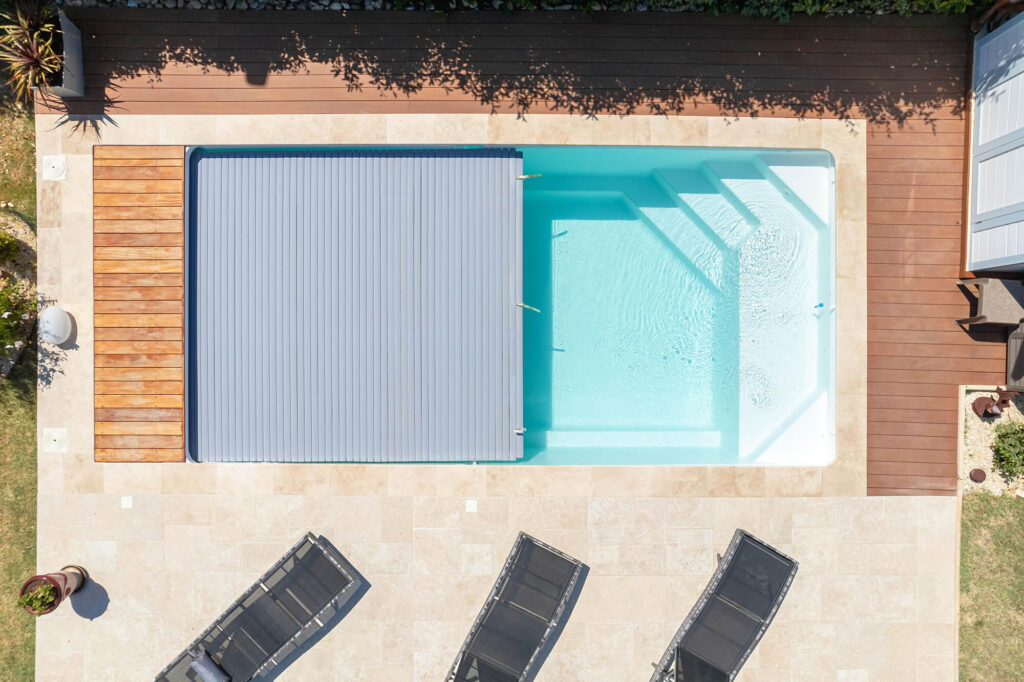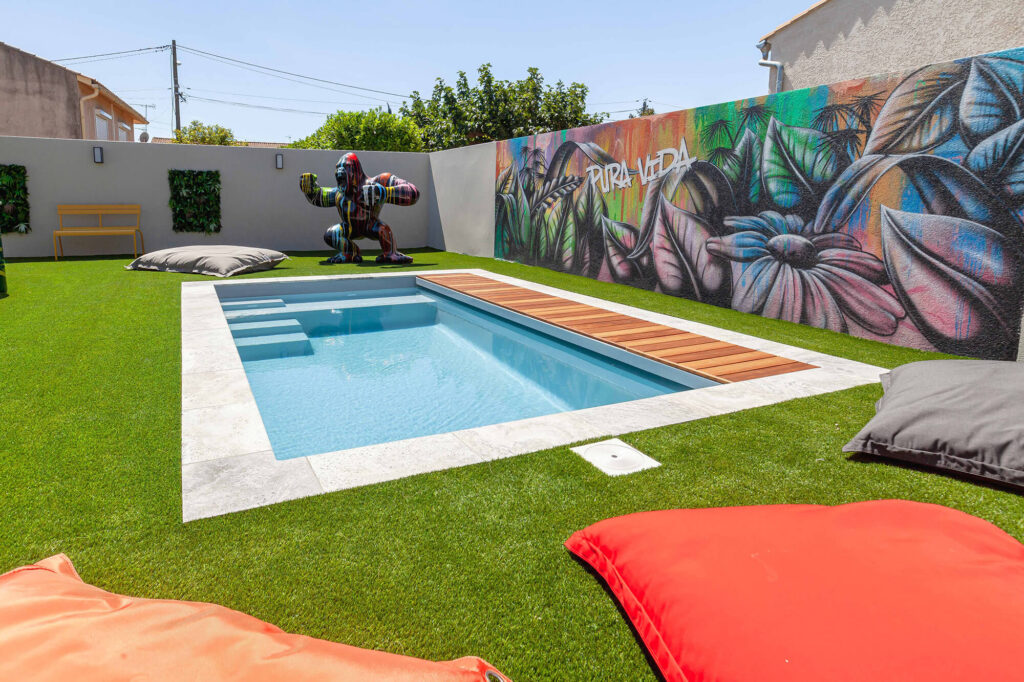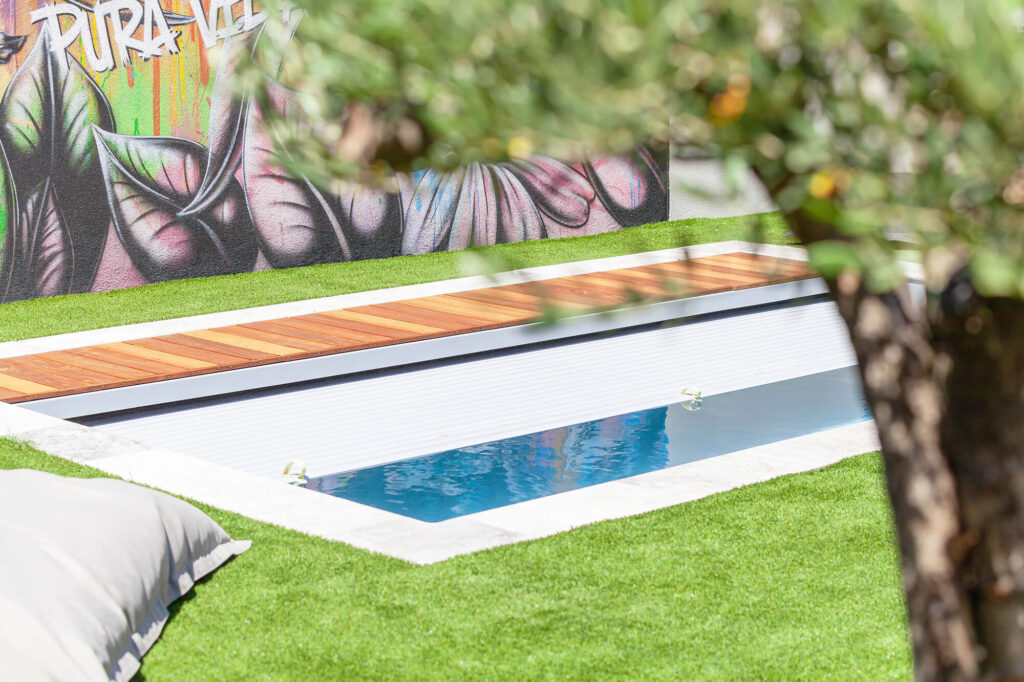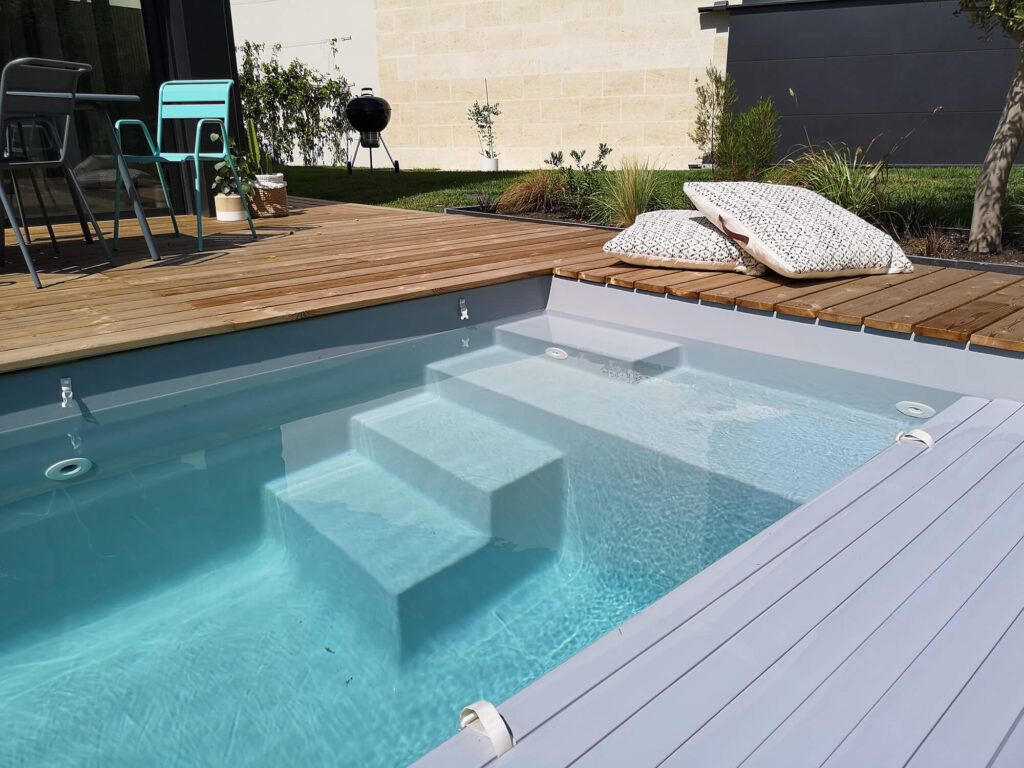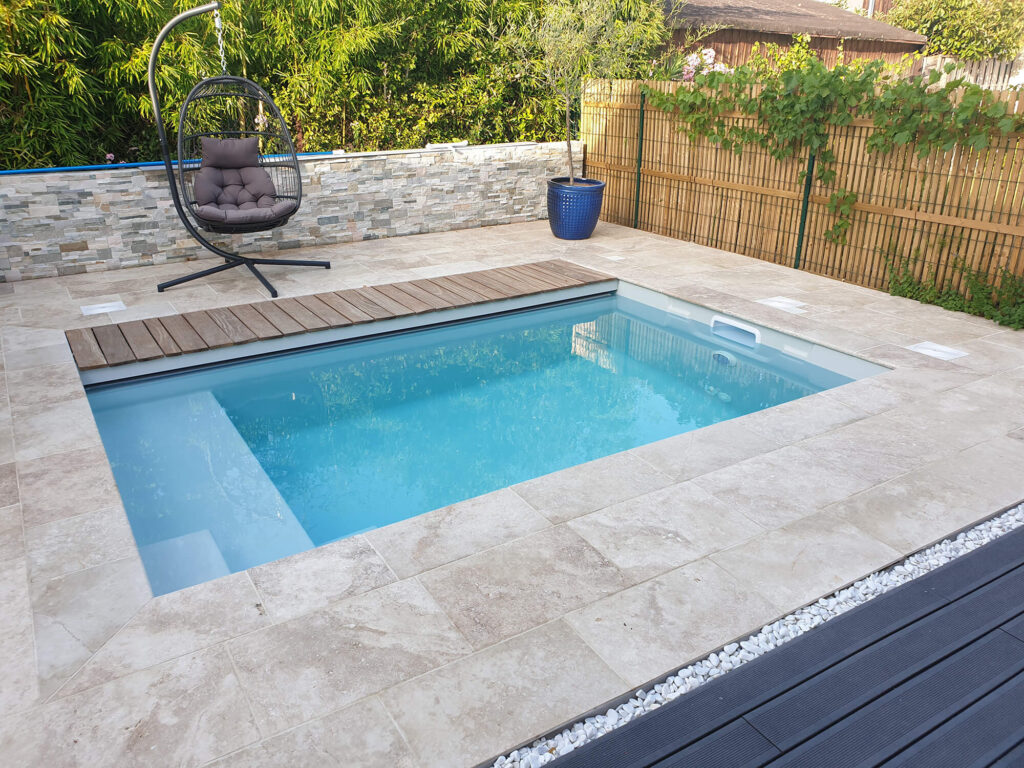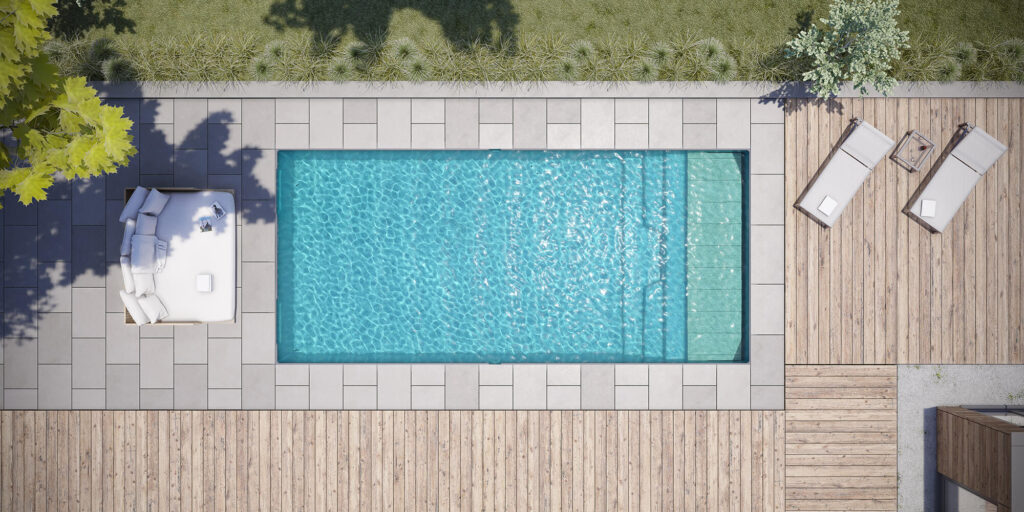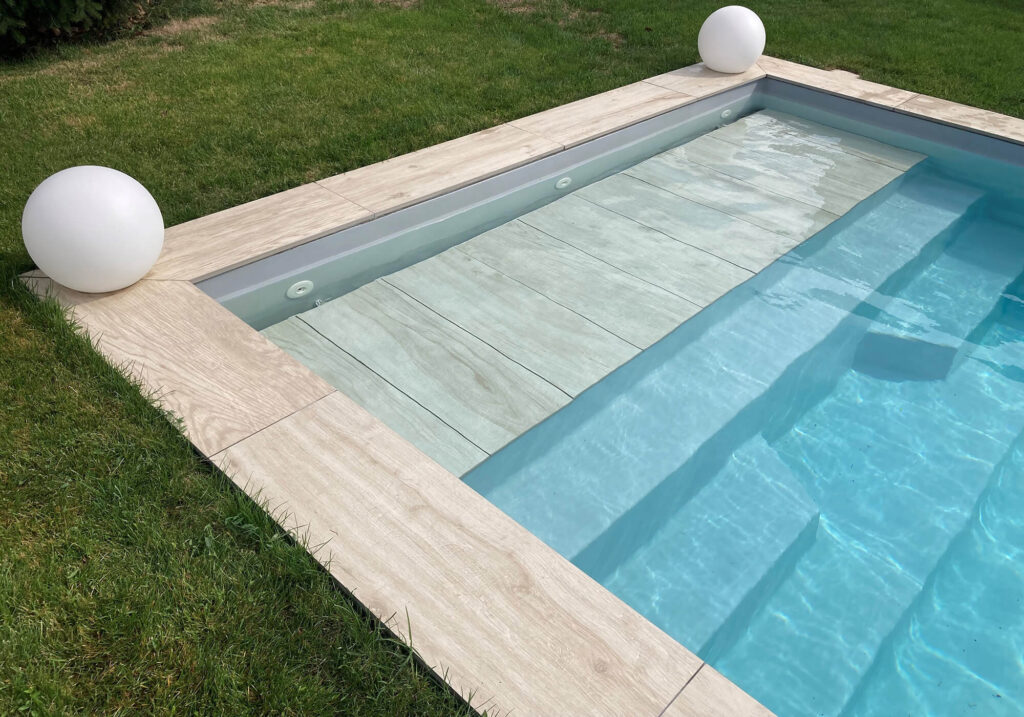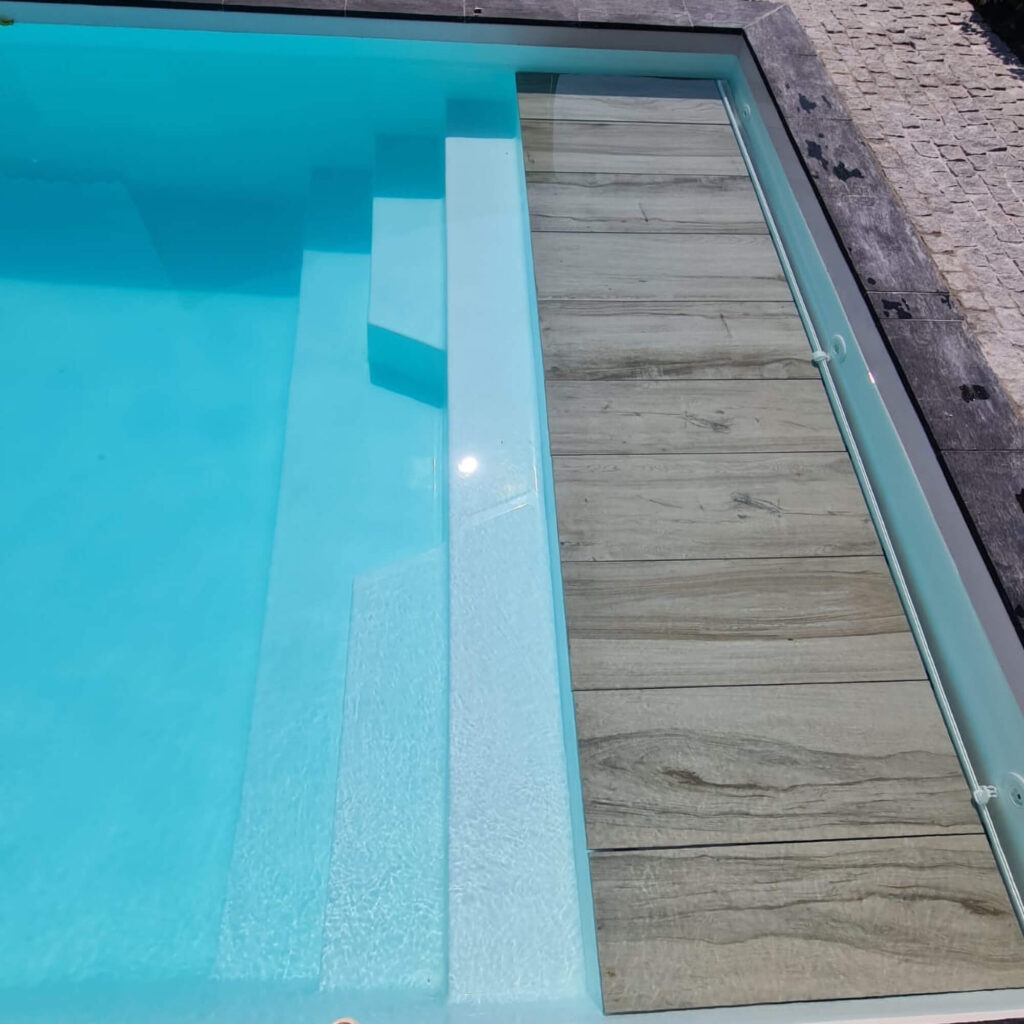While renewing ¼ of your pool water each year is generally sufficient to keep your water healthy and clean all year round, there are some special cases where you will need to drain your pool completely.
For example, if pool water remains green despite the use of a suitable treatment, we recommend that you empty your shell pool. The same applies if your pond’s shell is scaled (grayish walls and bottom) or damaged.
However, the draining is not without risk for your pelvis. Poorly executed, it can cause irreversible damage to the structure of your polyester shell pool.
So to avoid unpleasant surprises, here are our tips for emptying your pond in complete safety.
Legislation: can a shell pool be emptied?
Before you start emptying your pondIt’s important to know that the disposal of water from a private pond is subject to regulations. In fact, Article R1331-2 of the French Public Health Code prohibits the introduction of swimming pool drainage water into public sewer systems.
Is your pond connected to the collective rainwater network? In this case, you are authorized to drain the water from your pool, provided you have turned off the water treatment (chlorine, bromine, etc.) at least 15 days beforehand. As rainwater is discharged into the environment, it is essential to empty the basin without polluting the environment.
In any case, don’t empty your septic tank without first applying to your local authority for authorization. You should also find out about the conditions to be met when emptying the tank (maximum flow rate, etc.) and inform your neighbors.
Why drain your pool?
When maintenance is carried out correctly, there’s no need to renew your pool’s water completely every year. In fact, the use of a vacuum cleaner, a pool cleaner and an efficient filtration system can often keep the water clean and healthy.
Empty your shell pool to to change the water in your pool should only be done every 4 or 5 years, whatever the type of pool (concrete, tubular, above-ground or in-ground).
Other reasons may also lead you to empty the water from your pond:
- Pool water that remains green due to algae growth inside the pool. This phenomenon occurs particularly during water temperature variations or at the time of winterizing the poolif a step has been carried out incorrectly;
- A pool shell. To get rid of this greyish film covering the walls and bottom of the pond, you’ll need to drain and clean it.
- Poor water water balancecaused by too high a stabilizer level.
- Wear on the liner or cracks in the hull also require an empty basin. empty basin to carry out renovation or repair work.
How do I empty my shell pool?
Is your pool green, scaled or damaged? You must therefore proceed with the draining. For this to go smoothly, it’s important not to rush things…
1. Don’t drain your pool in winter
The answer to the question “Should I empty my pool in winter?
And the reason for this is simple: in winter, there’s a good chance that the ground surrounding your pool will be waterlogged, putting pressure on your pool’s shell. There is a risk that the structure will fall off its foundation.
In addition, with temperatures dropping, the risk of risk of frost is more important in winter. This can lead to damage to walls, structures and pipes. It is therefore essential to avoid frost.
To avoid damaging the polyester shell of your pond, we recommend that you carry out the drain as soon as the warm weather arrives in spring. By this time, the soil has already begun to dry out and will exert less pressure on the shell of your pond.
If you want to enjoy swimming during the summer season, check the weather forecast regularly to find the right time to change your oil!
2. Stop pool treatment
Spring has sprung and you’ve decided to empty your pond in the coming days? Also remember to respect the 15-day deadline without paying any chemical products so as not to pollute the soil.
In the meantime, contact your local council to find out about any additional precautions you need to take, and warn your neighbors of any possible seepage through the ground.
3. Empty your pond in several stages
The easiest way to drain the water from your pool is with a garden hose. garden hose. Pumps are also effective for simple emptying. To avoid the risk of flooding and give the water time to drain away, be sure to empty your pond in several stages.
Once your pool has been drained, be sure to leave at least 20 cm of water inside to prevent the structure from falling out of place. In addition to the water level, the installation of widthwise beams can also help to maintain the water level. bottom of the pool in place for the duration of the draining operation. However, take care to protect the coating at contact points, using cloths or cardboard sheets.
Finally, don’t delay refilling your pond: the less time she spends without water, the better off she’ll be!
Configure your pool online Back to news
